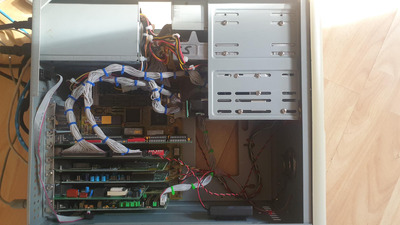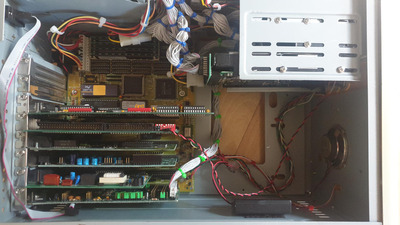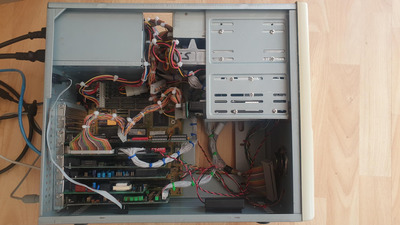Reply 120 of 171, by weedeewee
simon_e_hall wrote on 2022-07-04, 15:28:Anyway back to the job in hand, mostly been playing with software and playing around on how I want the hard drive partitions set […]
Anyway back to the job in hand, mostly been playing with software and playing around on how I want the hard drive partitions set up on the 286.
However, also installed the extra 1mb RAM on the video card and again it did not recognise it, so installed the capacitors next to the banks, and passed continuity testing confirming they are likely required, but that did not work.
The extra RAM is connected to ET4000 confirmed through continuity testing.
There is a spot for a PAL chip (PAL16L8) so might install a socket and install a chip, now if that does not work there is only left spots for resistors and a VRM, but I have no clues of their values. I could a least see what the other capacitors are (100nF) to install the correct ones and the spot for the PAL chip states PAL16L8.
You do realize,i hope, that a pal16l8 chip is programmable logic, which means that the chip would need a specific program in order to function correctly for the purpose you require. Without that programming, nothing good will happen.
Right to repair is fundamental. You own it, you're allowed to fix it.
How To Ask Questions The Smart Way
Do not ask Why !
https://www.vogonswiki.com/index.php/Serial_port


